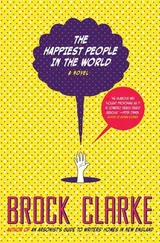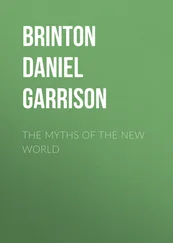Spanish anarchism is nothing more than an expression of the federal and individualist traditions of the country … It is not an outcome of abstract discussions, or theories cultivated by a few intellectuals, but an outcome of a social dynamic force that is often volcanic, and the tendency towards freedom in it can always count on the sympathy of millions of people.
That social dynamic force lies at the heart of Andalusian history, a history littered with poverty and spontaneous, violent uprisings – so when anarchist theory evolved and spread, it found a ready-made support base in southern Spain. In 1871, when the Communist International split between the Marxists, who believed in a strong state, and the Bakuninists, who didn’t, Spain was the only country that inclined heavily towards the latter. In Jerome Mintz’s anthropological study The Anarchists of Casas Viejas , about a tragic failed Andalusian uprising in which many died, we read that ‘Bakunin’s views matched the Spanish temper – belief in local control and maximum individual freedom – and reflected the Spanish situation – that of an oppressed but potentially explosive rural population.’ The forging of a collectivist utopia through protest and land occupation in Marinaleda is not simply a late capitalist story, the exception which ridicules the rule. It’s a well-rehearsed rural Andalusian performance of rebellion against a very physical, tangible inequality.
If the dance of popular peasant uprising is innate, the steps practised by the other side are just as entrenched in the Spanish muscle-memory; from the Inquisition, through the brutal repressions of the nineteenth century, into the Civil War, Francoism and beyond, encompassing the ‘preventative arrest’ and torture of some 20,000 leftists for political crimes in the 1890s, or the dispatching of government troops into factories in Seville to crush worker rebellions. Anticipating the polarity of the Spanish Civil War, revolutionary left-wing groups sought to agitate with ever-greater intensity as the nineteenth century drew to a close; the right-wing authorities were always equal to the task.
Spain is the only country in the world where anarchism ever became a mass movement. The anarcho-syndicalist trade union, the CNT, had over a million members in the pre-Civil War period, a situation which is entirely explicable given the country’s economic situation and desperate need for land redistribution. Beyond political context, there is even something anarchist-leaning about the Andalusian personality: individual freedom and mutual aid are both traits held in high esteem – your neighbour is born free to choose his or her own path, but equally, they should not be left to starve if the fates conspire against them.
While for Marx the urban proletariat was the vanguard of revolution, Bakunin’s philosophy focused more on a federated network of smaller communities and groups, a conception of communism that already chimed with the lived experience of Andalusian life: the village unit is a self-sustaining ecosystem which regulates itself, and does so without the need for state enforcement, power hierarchies (elected or otherwise) or the desire for profit. For Bakunin, freedom could only come from absolute devolution of power until there was none left at the centre. The ‘right of secession’ he wrote of was already held to be integral to liberty in the Andalusian pueblos . Bakunin called for:
The internal reorganisation of each country on the basis of the absolute freedom of individuals, of the productive associations, and of the communes. Necessity of recognising the right of secession: every individual, every association, every commune, every region, every nation has the absolute right to self-determination, to associate or not to associate, to ally themselves with whomever they wish and repudiate their alliances without regard to so-called historic rights [rights consecrated by legal precedent] or the convenience of their neighbours.
Of course, the isolated ecosystem of any nineteenth-century peasant village, with its unique customs, assumptions and culture, could make for a challenging environment into which to evangelise. Bakunin warned that their resistance to politicisation would need working around – via a network, connecting the most ready, able, and revolutionary members of each peasant community to talk to one another: ‘We must at all costs breach these hitherto impregnable communities and weld them together by the active current of thought, by the will, and by the revolutionary cause.’
Bakunin was writing about rural Russia, but ‘hitherto impregnable communities’ is the perfect description of the Andalusian pueblos of the nineteenth century. While they may have been somewhat culturally hermetic, some of their inhabitants did at least leave home, usually the men; thousands of workers were regularly compelled to travel great distances to find work, in order to survive. Most itinerant Andalusian day labourers migrated to the cities and emerging industries of the north, especially Catalunya and the Basque Country; others went elsewhere in rural Spain, or to France – wherever seasonal farm work was most plentiful. There, sleeping on barn floors for months at a time with scores of other poor labourers, revolutionary ideas were easily shared.
Among Spain’s many regions, anarchism thrived most of all in rural Andalusia (with a strong uptake in urban Catalunya, for different reasons). And yet, Andalusia is not the only poor part of Spain, far from it – parts of Extremadura and Castile, for example, have long been desperately poor. As Temma Kaplan writes in Anarchists of Andalusia 1868–1903 , it is actually the contrasting wealth, not poverty in itself, which explains the region’s innate radicalism: ‘Where almost everyone is poor, the idea of revolutionary social changes might seem utopian, for if everything were equally divided, everyone would be equally poor.’ It is the visible wealth inequalities in the south which have made it so susceptible to radical ideas.
‘Andalusia is not a poor country,’ wrote the authors of the Marinaleda hunger strike pamphlet in 1980, ‘it was made poor.’ Likewise, they argue, it was made revolutionary by the behaviour of outsiders. By seeking to impose a uniform Spanish culture on the regions, to create ‘one Spain’ under God and under the King, remote bourgeois centralism fomented the revolutionary atmosphere of the nineteenth and early twentieth centuries. Looking back over Andalusian history, they write, ‘there are constants of oppression, and there are constants of struggle’. Positioned against the ordinary people of the pueblos were gran propietaria , big property, identified as the bourgeoisie, the aristocracy and the Catholic Church – with the Guardia Civil as their hired thugs and the corrupt caciques as their political representatives. Gran propietaria has a contemporary equivalent, as the nature of capitalist exploitation has changed: on demonstrations in 2013, the oppressors, when identified in one phrase, are gran capital , big business.
Electoral politics has rarely offered the poor labourers of Andalusia much hope of a solution. There was a pretence of democracy in the late nineteenth and early twentieth century, via the election of local caciques – normally a choice between two bourgeois men of means: a conservative or a nominal liberal; the latter distinguishable only by the mildest of anti-clericalism. Even when anarchism began to flourish in the south, the sheer desperation of the landless labourers impelled them to keep voting for these men. The caciques looked after the interests of the landowners, and coercion, buying votes and electoral fraud were commonplace, as was intimidation from the local members of the Guardia Civil. The caciques ’ men chose the shift workers from those assembled in the town square, and, quite simply, if you wanted the miserly amount of work on offer you had to vote the way they commanded.
Читать дальше












